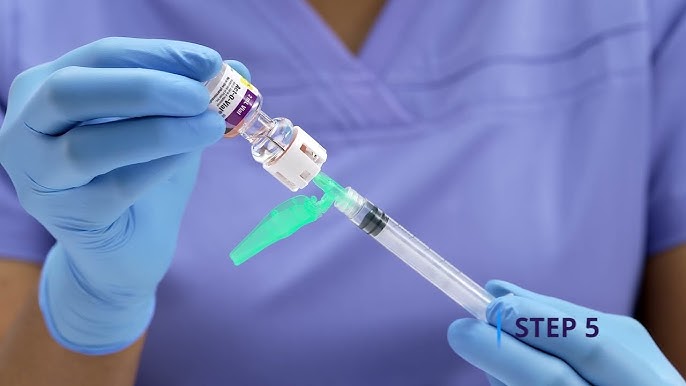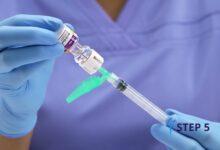Self Blunting Needle: Preventing Needlestick Injuries with Innovative Safety Features

Needlestick injuries are one of the most common and dangerous hazards faced by healthcare professionals around the world. These injuries expose workers to a variety of risks, including bloodborne pathogens like HIV, hepatitis B, and hepatitis C. To combat this problem, the medical industry has developed the self blunting needle, a revolutionary device designed to reduce the likelihood of needlestick injuries. With its innovative safety features, the self blunting needle has transformed healthcare safety standards, ensuring that healthcare workers are better protected during medical procedures.
Self blunting needles incorporate mechanisms that either blunt or retract the needle tip automatically once it has been withdrawn from the patient. This technology eliminates the risk of accidental needle pricks, which are all too common in busy healthcare settings. Healthcare professionals who handle needles on a daily basis can benefit greatly from using self blunting needles, as they provide a safer environment for both workers and patients. By significantly reducing the risk of injury, these needles help to prevent the spread of infections, making healthcare procedures safer and more efficient.
What is a Self Blunting Needle?
A self blunting needle is a specially designed medical needle that features an automatic safety mechanism to blunt the sharp needle tip after use. Unlike traditional needles, which remain sharp and pose a constant risk of injury, a self blunting needle immediately becomes safer to handle once it is withdrawn from the patient. This technology is often built into the needle itself, with a retractable or blunting feature that engages as soon as the needle is no longer in use. These needles can be used in various healthcare settings, including hospitals, clinics, and outpatient facilities, to ensure the safety of healthcare workers.
The key advantage of a self blunting needle is its ability to minimize the risk of accidental needle sticks. Traditional needles, while effective for medical procedures, can remain sharp and dangerous after use. This exposes healthcare workers to the risk of injury during disposal or when they inadvertently come into contact with the needle. With self blunting needles, the risk is greatly reduced, as the sharp point is either retracted into the casing or blunted before the needle is disposed of. This innovative design feature enhances overall safety in medical settings, making it a valuable tool in injury prevention.
How Self Blunting Needles Prevent Needlestick Injuries
Self blunting needles work by employing a unique safety mechanism that eliminates the exposure of the sharp needle tip once it has been used. After a medical procedure is completed, the needle’s tip either retracts into the casing or becomes blunted, depending on the specific design of the needle. This automatic activation of the safety feature ensures that healthcare workers are never at risk of accidental injury from the needle after use. As a result, the needle becomes much safer to handle during disposal, reducing the chance of exposure to harmful bloodborne pathogens.
Needlestick injuries are a significant concern for healthcare professionals, as they are often caused by rushing, fatigue, or poor needle handling. These injuries can lead to serious health consequences, such as the transmission of infectious diseases. By using self blunting needles, healthcare workers can safely dispose of needles without worrying about the sharp tip causing harm. This not only improves safety but also boosts confidence in the workplace. With the risk of needlestick injuries significantly reduced, healthcare professionals can focus on their duties without constantly worrying about exposure to dangerous pathogens.
Innovative Safety Features of Self Blunting Needles

The self blunting needle is equipped with several innovative safety features that make it a valuable tool in the medical field. The most prominent feature is the automatic blunting or retraction mechanism that activates once the needle is withdrawn. This system works by either bluntly deforming the needle tip or retracting it entirely into the casing, effectively rendering the needle non-threatening. This reduces the risk of accidental injuries significantly, as the sharp end of the needle is no longer exposed during handling or disposal.
In addition to the blunting or retracting mechanism, many self blunting needles are designed with additional safety features such as sheathing systems. These systems cover the needle after use, further preventing exposure to the sharp tip. The materials used in self blunting needles are also designed for durability, ensuring that the safety mechanisms work reliably throughout their use. With these advanced safety features, self blunting needles offer an enhanced level of protection for healthcare workers, minimizing the risk of needlestick injuries and improving overall safety standards.
Benefits of Using Self Blunting Needles in Healthcare
The use of self blunting needles offers numerous benefits, both for healthcare workers and patients. The most obvious advantage is the significant reduction in the risk of needlestick injuries. These injuries are not only painful but can also lead to severe infections and long-term health complications. By using self blunting needles, healthcare workers are less likely to suffer from these injuries, resulting in a safer work environment.
Beyond injury prevention, self blunting needles contribute to overall infection control efforts. By ensuring that the needle tip is no longer exposed, these needles help to reduce the chances of cross-contamination, which can occur when contaminated needles come into contact with other surfaces or materials. This is particularly important in environments where cleanliness and sterilization are critical. Additionally, the use of self blunting needles helps to streamline the disposal process, as healthcare workers can safely dispose of the needles without having to worry about handling the sharp tip.
Challenges and Considerations When Using Self Blunting Needles
While self blunting needles offer numerous advantages, there are also some challenges to consider when using these devices in healthcare settings. One of the primary concerns is the cost. Self blunting needles tend to be more expensive than traditional needles due to the added safety mechanisms and advanced materials used in their production. This can be a barrier for some healthcare facilities, especially those with limited budgets.
Another challenge is the need for proper training and education. Healthcare workers must be familiar with how to properly use and dispose of self blunting needles to ensure that their safety features are fully effective. Institutions may need to invest in additional training programs to ensure that all staff members understand how to handle these devices correctly. Despite these challenges, the benefits of self blunting needles far outweigh the drawbacks, making them an essential tool in promoting healthcare safety.
Conclusion
The introduction of self blunting needles has brought a new level of safety to healthcare settings. These innovative devices effectively prevent needlestick injuries, which have long been a major concern for healthcare workers. With their automatic safety features, such as retracting or blunting the needle tip after use, self blunting needles ensure that the risk of exposure to dangerous pathogens is minimized. By adopting these advanced needles, healthcare facilities can create safer environments for both patients and staff.
As the demand for improved safety standards continues to grow in the medical industry, the use of self blunting needles is expected to increase. By investing in these devices, healthcare providers can reduce the incidence of needlestick injuries, lower the risk of infection, and enhance overall safety protocols. Ultimately, self blunting needles are helping to make healthcare a safer and more efficient industry.
FAQs
What is the difference between a self blunting needle and a regular needle?
A self blunting needle features a built-in safety mechanism that either retracts or blunts the needle tip automatically after use, whereas traditional needles remain sharp and pose a higher risk of injury.
How do self blunting needles work to prevent needlestick injuries?
Self blunting needles use a retracting or blunting mechanism that activates once the needle is withdrawn, ensuring the sharp tip is no longer exposed and preventing accidental needle sticks.
Are self blunting needles more expensive than traditional needles?
Yes, self blunting needles are typically more expensive due to the added safety features, but the long-term savings from preventing needlestick injuries can make them cost-effective in the long run.
Can self blunting needles be used for all types of medical procedures?
While self blunting needles are suitable for most medical procedures, healthcare providers should select the appropriate needle type based on the specific needs of each procedure.
What are the benefits of using self blunting needles in terms of infection control?
Self blunting needles help reduce the risk of cross-contamination by ensuring that the needle tip is not exposed after use, contributing to better infection control practices in healthcare settings.
How can healthcare facilities implement the use of self blunting needles effectively?
Healthcare facilities can implement self blunting needles by training staff on their proper use and integrating them into their standard safety protocols to ensure the devices are used correctly.
You may also read: Eileen Feinstein Mariano’s Family Life
